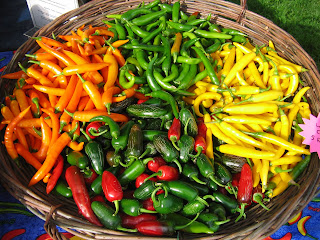MUSSEL MUSSEL MUSSEL MUSSEL
The New Zealand greenshell mussel is world famous everywhere but home. In France it is know as the Moule verte de Nouvelle Zelande, in Germany it is the Neuseelandische Gruene Muschel, and in Italy it is the Mitilo.
What is it about this very abundant Marlborough product that does not make it the top of the list for the dinner table?
Is it because it is too cheap? If you were picking your seafood dinner tonight, it would always feature after the scallops and the oysters and clams that we also find in Marlborough's pristine waters.
While they grow wild around our coastline, it is farmed greenshell mussels that are firmly established as New Zealand's largest seafood export. With the recent tightening of purse strings, the humble and tasty mussel has found its way back on to our dinner table as we try to make each dollar stretch further.
For such little creatures they pack a real punch, both in terms of what they contribute to our aquaculture industry and what they eat. A mussel eats tiny sea creatures called plankton and things like algae, and will get its food from the seawater by sucking it in and filtering out all the tiny bits of food as it spits the water out again.
We are told to drink 2.5 litres of water a day, but the little mussel has to suck in and spit out about 350 litres – about five good-sized bathtubs of water – every day!
My favourite recipe for mussels is steamed open in the shell, served with crusty bread and bowls of water and lemon to clean your fingers with. These are shared at the table and are accompanied by loud slurps as you soak up the last of the juice.
If you want something a little more refined, present them in the shell with just a touch of class – it all depends on what you want to achieve at the end of the day.
For mussels the fancy way, take each cooked mussel, wrap a strip of cucumber around it, dress with a little saffron aioli and garnish with chives.
SAFFRON AIOLI
3 cloves Marlborough garlic, peeled
1 tsp Marlborough salt
1 large egg yolk
1 Tbsp white wine vinegar
1 Tbsp warm water
1 Tbsp freshly squeezed lemon juice
2 pinches of saffron, crushed with a little salt and added to warm water
1 cup grapeseed oil
1/3 cup Marlborough extra virgin olive oil (if you make it with 100 per cent New Zealand olive oil, it is too strong in olive and acidic flavours)
To make the aioli, sprinkle the garlic with a pinch of the salt and smash it into a paste with the side of a cook's knife. Whisk all the ingredients except the oil, then slowly drizzle in the oil until thick and creamy.
This is my favourite method, and the best way to eat live mussels. Make sure the mussels are closed tightly to ensure freshness. Serve in a large bowl with small finger bowls of water. Enjoy!
100g onions
20g garlic
60ml white wine vinegar
150ml extra virgin olive oil 1/4 tsp fresh black pepper
4 tsp picked chervil
48 live Marlborough greenshell mussels, cleaned and debearded
100ml Marlborough sauvignon blanc
Sweat (cook without colour) finely chopped onion and garlic in 2 tsp of olive oil for 5 minutes. Add vinegar and reduce by half. Add olive oil.
Place the mussels and 100ml of sauvignon blanc in a large pot with a lid. Put on to a hot element and cook until the mussels open. Shake the pot every couple of minutes to ensure even cooking. Discard any mussels that have not opened.
Toss the onions over the top and serve in a bowl with crusty bread and lemon or lime wedges.



Comments
Post a Comment